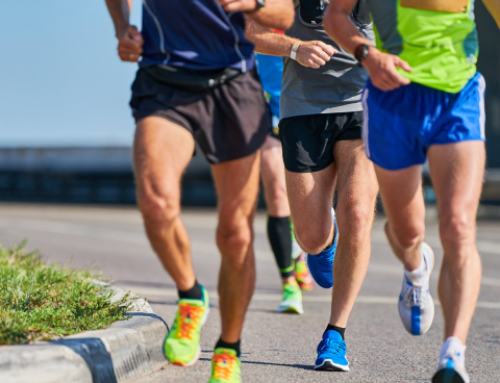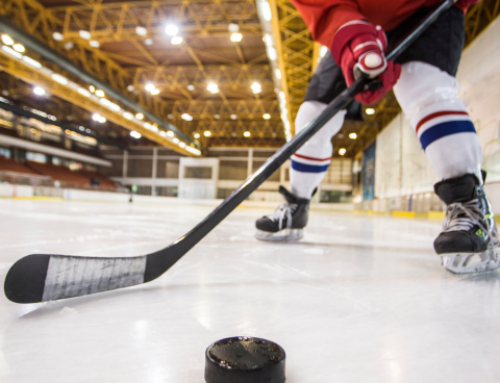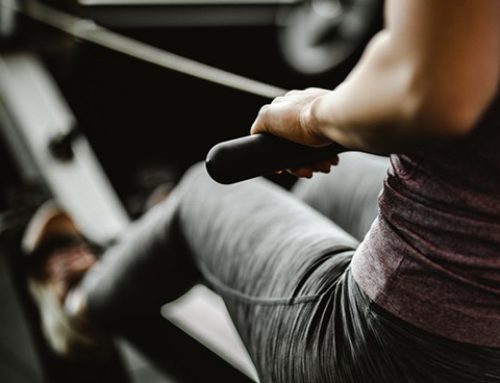6 Components of Off-Ice Hockey Training
When looking for an off-ice hockey training program, you will not have a shortage of choices. But many of the routines out there call for gimmicky approaches that will do little for your game on the ice. Stick to these six pillars of off-ice hockey training to get the most out of your workouts. These tried and true methods will directly result in increased strength, speed, power and skill execution on the ice.
Off-Ice Hockey Training
Strength Training
Get into the weight room and work with loads and other forms of resistance. Too many programs include only the physioball and use trendy terms like “strengthening your core.” There is no substitute for lifting a load and handling the stress it causes. Not to say that bodyweight and ball exercises are not useful, but they should not be the primary methods during your workout.
Speed Training
Science has proven a correlation between running speed and skating speed. A program that improves your ability to move fast on dry land will also make you faster on the ice. Avoid getting too technical. When off-ice, develop your athleticism, not your skating stride.
Coordination Development
Russian strength coaches always talk about the athlete’s ability to make connections within his body. If you make these connections quicker and more efficiently, you will have an advantage over your competition. A program must include ways to challenge your ability to understand where you are in space and how to move in the most efficient way possible. Accomplish this by incorporating neural confusion drills, which are exercises that challenge your coordination by forcing you to perform multiple movements at once—e.g., throwing and catching a ball while performing speed ladder drills with your feet.
Cardio
This is one of the most common components of off-ice programs. We all hear about running the hill behind the rink and sprinting up and down the bleachers 20 times. A different approach is to include metabolic running. This type of conditioning is more closely aligned with how hockey is actually played. Run short (30- to 40-second) sprints with rest in between.
Joint Flexibility
Every athlete benefits from mobile joints. While there has been considerable debate about the value of stretching, it is widely accepted that strong, flexible limbs and joints increase sports performance by allowing a more complete, natural and powerful range of motion during athletic movements. Full range of motion is best achieved through dynamic warm-up movements at the beginning of training sessions and post-workout stretching following the activity.
Off-Ice Drills
Look for programs that challenge your skills and makes them better. The only ditch you can fall into is trying to do too many things at one time—like stick handling with one hand and juggling a ball in the other, or hopping on one foot and kicking a soccer ball with the other. It’s one thing to develop your ability to multitask and another to train for the circus.
A program that is well balanced and properly thought out will develop all aspects of your game, not just make you strong. If your program incorporates these six components and you stay away from quick-fix gimmicks, you will be on the road to success.
RECOMMENDED FOR YOU
MOST POPULAR
6 Components of Off-Ice Hockey Training
When looking for an off-ice hockey training program, you will not have a shortage of choices. But many of the routines out there call for gimmicky approaches that will do little for your game on the ice. Stick to these six pillars of off-ice hockey training to get the most out of your workouts. These tried and true methods will directly result in increased strength, speed, power and skill execution on the ice.
Off-Ice Hockey Training
Strength Training
Get into the weight room and work with loads and other forms of resistance. Too many programs include only the physioball and use trendy terms like “strengthening your core.” There is no substitute for lifting a load and handling the stress it causes. Not to say that bodyweight and ball exercises are not useful, but they should not be the primary methods during your workout.
Speed Training
Science has proven a correlation between running speed and skating speed. A program that improves your ability to move fast on dry land will also make you faster on the ice. Avoid getting too technical. When off-ice, develop your athleticism, not your skating stride.
Coordination Development
Russian strength coaches always talk about the athlete’s ability to make connections within his body. If you make these connections quicker and more efficiently, you will have an advantage over your competition. A program must include ways to challenge your ability to understand where you are in space and how to move in the most efficient way possible. Accomplish this by incorporating neural confusion drills, which are exercises that challenge your coordination by forcing you to perform multiple movements at once—e.g., throwing and catching a ball while performing speed ladder drills with your feet.
Cardio
This is one of the most common components of off-ice programs. We all hear about running the hill behind the rink and sprinting up and down the bleachers 20 times. A different approach is to include metabolic running. This type of conditioning is more closely aligned with how hockey is actually played. Run short (30- to 40-second) sprints with rest in between.
Joint Flexibility
Every athlete benefits from mobile joints. While there has been considerable debate about the value of stretching, it is widely accepted that strong, flexible limbs and joints increase sports performance by allowing a more complete, natural and powerful range of motion during athletic movements. Full range of motion is best achieved through dynamic warm-up movements at the beginning of training sessions and post-workout stretching following the activity.
Off-Ice Drills
Look for programs that challenge your skills and makes them better. The only ditch you can fall into is trying to do too many things at one time—like stick handling with one hand and juggling a ball in the other, or hopping on one foot and kicking a soccer ball with the other. It’s one thing to develop your ability to multitask and another to train for the circus.
A program that is well balanced and properly thought out will develop all aspects of your game, not just make you strong. If your program incorporates these six components and you stay away from quick-fix gimmicks, you will be on the road to success.











